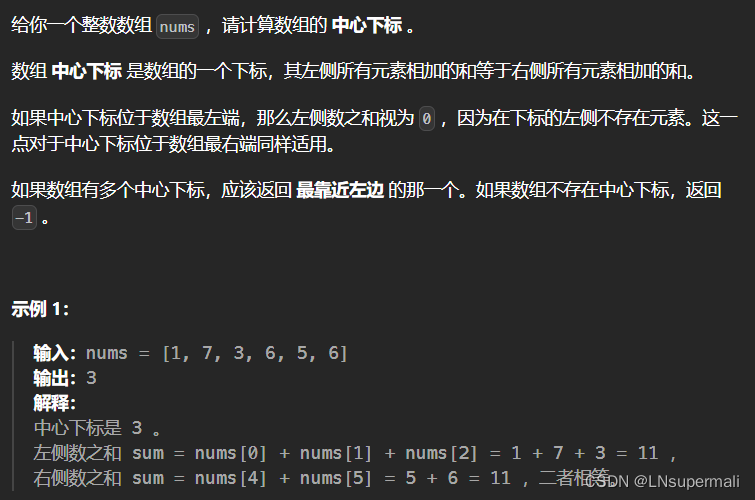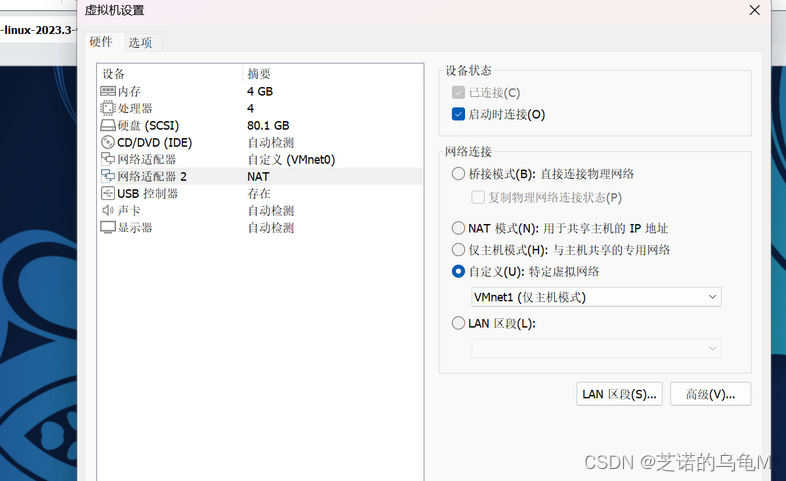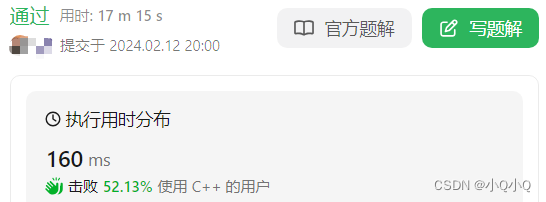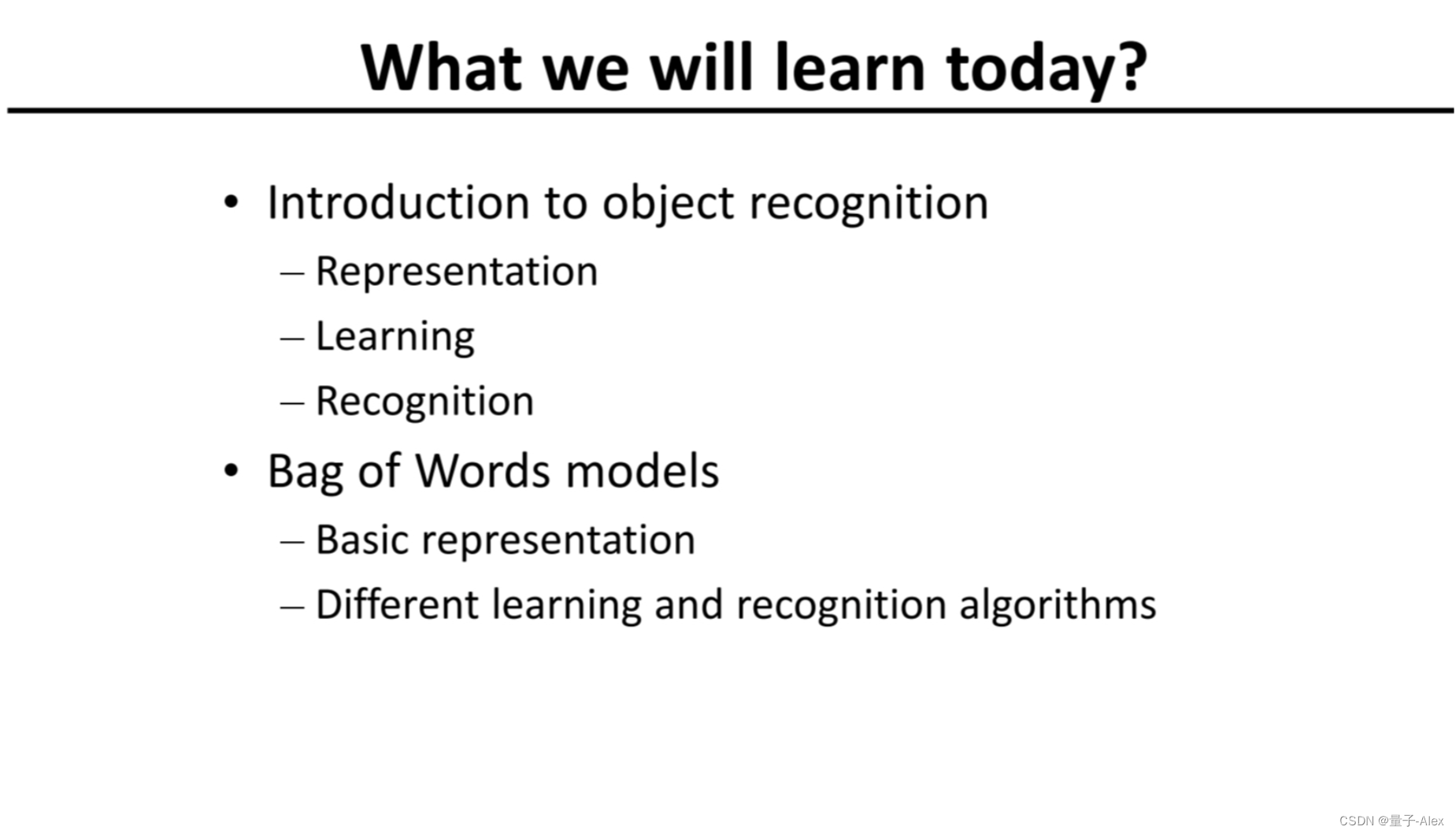
目录
前言🌈
友友们,我们又见面啦!今天分享的是很重要的知识,需要的请加紧码住收藏哦!下面开始今天的类与对象(中)!
1. 类的6个默认成员函数🌤️
如果一个类中什么成员都没有,简称为空类。
空类中真的什么都没有吗?并不是,任何类在什么都不写时,编译器会自动生成以下6个默认成员函数。
默认成员函数:用户没有显式实现,编译器会生成的成员函数称为默认成员函数。

2. 构造函数⛅️
2.1 语法定义
构造函数是一个特殊的成员函数,名字与类名相同,创建类类型对象时由编译器自动调用,以保证每个数据成员都有 一个合适的初始值,并且在对象整个生命周期内只调用一次。
下面我们举例说明:
1. 显示实现
#include<iostream>
using namespace std;
class Date {
public:
//显示实现全缺省的构造函数---更加方便
Date(int year = 2024, int month = 2, int day = 7) {
_year = year;
_month = month;
_day = day;
}
void Print()
{
cout << _year << '-' << _month << '-' << _day << endl;
}
private:
int _year;
int _month;
int _day;
};
int main()
{
Date d1;//不传参
d1.Print();
Date d2(2024,2,9);//传参
d2.Print();
return 0;
}
2. 自动调用
#include<iostream>
using namespace std;
class Date {
public:
void Print()
{
cout << _year << '-' << _month << '-' << _day << endl;
}
private:
//给缺省值
int _year=2024;
int _month=1;
int _day=1;
};
int main()
{
Date d1;//不传参
//注意:如果通过无参构造函数创建对象时,对象后面不用跟括号,否则就成了函数声明
d1.Print();
return 0;
}
2.2 特性
构造函数是特殊的成员函数,需要注意的是,构造函数虽然名称叫构造,但是构造函数的主要任务并不是开空间创建对象,而是初始化对象。
其特征如下:
1. 函数名与类名相同。
2. 无返回值。
3. 对象实例化时编译器自动调用对应的构造函数。
4. 构造函数可以重载。
5. 如果类中没有显式定义构造函数,则C++编译器会自动生成一个无参的默认构造函数,一旦用户显式定义编译器将不再生成。
6. 默认生成的构造函数不会对内置类型做处理,只会调用自定义类型的默认构造函数进行初始化。
注意⚠️
C++把类型分成内置类型(基本类型)和自定义类型。内置类型就是语言提供的数据类
型,如:int/char...,自定义类型就是我们使用class/struct/union等自己定义的类型。
C++11 中针对内置类型成员不初始化的缺陷,又打了补丁,即:内置类型成员变量在
类中声明时可以给默认值。(之前的演示中我们写了)
7. 无参的构造函数和全缺省的构造函数都称为默认构造函数,并且默认构造函数只能有一个。注意:无参构造函数(1)、全缺省构造函数(2)、我们没写编译器默认生成的构造函数(3),都可以认为是默认构造函数。
三者只能出现一个,2,3和1 是互斥的;2,3也不能同时存在,因为无参的时候会出现歧义(不知道调用哪个)
我们这里推荐写全缺省构造函数(方便+万全)
3. 析构函数🌥️
3.1 概念
析构函数:与构造函数功能相反,析构函数不是完成对对象本身的销毁,局部对象销毁工作是由编译器完成的。而对象在销毁时会自动调用析构函数,完成对象中资源的清理工作。
栈桢的销毁和开辟不归我们管,我们只管堆上的空间的开辟和销毁,而析构函数主要运用于自动调用销毁堆上的空间
析构函数不像构造函数一样每个类都需要,更多的是像栈这样在堆上动态开辟空间的类需要
3.2 特性
析构函数是特殊的成员函数,其特征如下:
1. 析构函数名是在类名前加上字符 ~。
2. 无参数无返回值类型。
3. 一个类只能有一个析构函数。若未显式定义,系统会自动生成默认的析构函数。
默认生成的析构函数不会对内置类型做处理,只会调用自定义类型的默认析构函数进行销毁。
注意:析构函数不能重载。
4. 对象生命周期结束时,C++编译系统系统自动调用析构函数。
#include<iostream>
#include<assert.h>
using namespace std;
typedef int DataType;
class stack {
public:
stack(size_t capacity = 4) {
_a = (int*)malloc(sizeof(int) * capacity);
assert(_a);
_capacity = capacity;
_size = 0;
}
void push(DataType x) {
//...
_a[_size] = x;
_size++;
}
bool Empty() {
return _size == 0;
}
DataType top() {
return _a[_size - 1];
}
void pop() {
_size--;
}
~stack(){
cout << "~stack()" << endl;
if (_a)
{
free(_a);
_a = nullptr;
}
_size = _capacity = 0;
}
private:
int* _a;
int _capacity;
int _size;
};
int main() {
stack st;
st.push(1);
st.push(2);
st.push(3);
return 0;
}![]()
#include<iostream>
using namespace std;
class Time
{
public:
~Time()
{
cout << "~Time()" << endl;
}
private:
int _hour;
int _minute;
int _second;
};
class Date
{
private:
// 基本类型(内置类型)
int _year = 1970;
int _month = 1;
int _day = 1;
// 自定义类型
Time _t;
};
int main()
{
Date d;
return 0;
}前三个是 内置类型成员,销毁时不需要资源清理, 最后系统直接将其内存回收即可; 而_t是Time 类对象 ,所以需要 生成Date的默认析构函数去调用Time的显示实现的析构函数 来实现销毁。
![]()
析构函数调用的顺序:
局部变量(先定义后析构)--->局部静态--->全局对象(先定义后析构)
4. 拷贝构造函数☁️
4.1 概念
拷贝构造函数:只有单个形参,该形参是对本类类型对象的引用(一般常用const修饰),在用已存在的类类型对象创建新对象时由编译器自动调用。
4.2 特性
拷贝构造函数也是特殊的成员函数,其特征如下:
1. 拷贝构造函数是构造函数的一个重载形式。
2. 拷贝构造函数的参数只有一个且必须是类类型对象的引用,使用传值方式编译器直接报错,因为会引发无穷递归调用。
class Date
{
public:
Date(int year = 1900, int month = 1, int day = 1)
{
_year = year;
_month = month;
_day = day;
}
// Date(const Date& d) // 正确写法
Date(const Date d) // 错误写法:编译报错,会引发无穷递归
{
_year = d._year;
_month = d._month;
_day = d._day;
}
private:
int _year;
int _month;
int _day;
};
int main()
{
Date d1;
Date d2(d1);
return 0;
}
C++规定:传值传参的过程要调用拷贝构造
调用拷贝构造,需要先传参数,但是是传值传参,会形成一个新的拷贝构造,所以拷贝构造用传值传参会造成无穷递归
而&传参就不一样了,不会产生拷贝因为d就是d1的别名就是本身
加const可以避免赋值方向错误
3. 若未显式定义,编译器会生成默认的拷贝构造函数。 默认的拷贝构造函数对象按内存存储按字节序完成拷贝,这种拷贝叫做浅拷贝,或者值拷贝。
注意:在编译器生成的默认拷贝构造函数中,内置类型是按照字节方式直接拷贝的,而自定义类型是调用其拷贝构造函数完成拷贝的。
1. 内置类型
#include<iostream>
using namespace std;
//内置类型
class Date {
private:
int _year=2024;
int _month=2;
int _day=8;
};
int main() {
Date d1;
Date d2(d1);
return 0;
}
2. 自定义类型
#include<iostream>
using namespace std;
//自定义类型
class Time {
public:
Time(int hour = 20, int minute = 2, int second = 8) {
_hour = hour;
_minute = minute;
_second = second;
}
Time(const Time& d) {
_hour = d._hour;
_minute = d._minute;
_second = d._second;
cout << "Time(const Time& d)" << endl;
}
private:
int _hour;
int _minute;
int _second;
};
class Date {
public:
private:
Time _t;
};
int main() {
Date d1;
Date d2(d1);
return 0;
}![]()
4. 动态开辟空间的像栈之类的需要深拷贝,不能是浅拷贝否则报错。
注意:类中如果没有涉及资源申请时,拷贝构造函数是否写都可以;一旦涉及到资源申请
时,则拷贝构造函数是一定要写的,否则就是浅拷贝。
#include<iostream>
#include<assert.h>
using namespace std;
typedef int DataType;
class stack {
public:
stack(size_t capacity = 4) {
_a = (int*)malloc(sizeof(int) * capacity);
assert(_a);
_capacity = capacity;
_size = 0;
}
void push(DataType x) {
//...
_a[_size] = x;
_size++;
}
bool Empty() {
return _size == 0;
}
DataType top() {
return _a[_size - 1];
}
void pop() {
_size--;
}
~stack(){
cout << "~stack()" << endl;
if (_a)
{
free(_a);
_a = nullptr;
}
_size = _capacity = 0;
}
private:
int* _a;
int _capacity;
int _size;
};
int main() {
stack st1;
st1.push(1);
st1.push(2);
st1.push(3);
stack st2(st1);
return 0;
}

指针浅拷贝--->2个都指向同一块空间,生命周期结束时,调用~stack()释放st2指针所指空间,指针置为nullptr;但是,st2所指空间释放不影响st1指针的所指空间仍为已经释放的空间,导致st1变成野指针,此时再次调用析构函数但是同一块空间不能释放2次---有些时候默认拷贝函数(值拷贝)会导致程序出错--->运行崩溃
解决方法:
1. 开辟一个样大的空间
2. 拷贝数据
#include<iostream>
#include<assert.h>
using namespace std;
typedef int DataType;
class stack {
public:
stack(size_t capacity = 4) {
DataType* _a = (DataType*)malloc(sizeof(DataType) * capacity);
assert(_a);
_capacity = capacity;
_size = 0;
}
stack(const stack& st) {
DataType* tmp = (DataType*)malloc(sizeof(DataType) * st._capacity);
assert(tmp);
memcpy(tmp, _a, sizeof(DataType) * st._size);
_a = tmp;
_size = st._size;
_capacity = st._capacity;
}
void push(DataType x) {
//...
_a[_size] = x;
_size++;
}
bool Empty() {
return _size == 0;
}
DataType top() {
return _a[_size - 1];
}
void pop() {
_size--;
}
~stack(){
cout << "~stack()" << endl;
if (_a)
{
free(_a);
_a = nullptr;
}
_size = _capacity = 0;
}
private:
int* _a;
int _capacity;
int _size;
};
int main() {
stack st1;
stack st2(st1);
return 0;
}
5. 拷贝构造函数典型调用场景:
使用已存在对象创建新对象
函数参数类型为类类型对象
函数返回值类型为类类型对象
#include<iostream>
#include<assert.h>
using namespace std;
class Date{
public:
Date(int year, int minute, int day)
{
cout << "Date(int,int,int):" << this << endl;
}
Date(const Date& d)
{
cout << "Date(const Date& d):" << this << endl;
}
~Date()
{
cout << "~Date():" << this << endl;
}
private:
int _year;
int _month;
int _day;
};
Date Test(Date d)
{
Date temp(d);
return temp;
}
int main()
{
Date d1(2022, 1, 13);
Test(d1);
return 0;
}
为了提高程序效率,一般对象传参时,尽量使用引用类型,返回时根据实际场景,能用引用尽量使用引用。
5. 赋值运算符重载🌦️
5.1 运算符重载
C++为了增强代码的可读性引入了运算符重载,运算符重载是具有特殊函数名的函数,也具有其返回值类型,函数名字以及参数列表,其返回值类型与参数列表与普通的函数类似。
函数名字为:关键字operator后面接需要重载的运算符符号。
函数原型:返回值类型 operator操作符(参数列表)
注意:
1. 不能通过连接其他符号来创建新的操作符:比如operator@
2. 重载操作符必须有一个类类型参数(自定义)
3. 用于内置类型的运算符,其含义不能改变,例如:内置的整型+,不 能改变其含义
4. 作为类成员函数重载时,其形参看起来比操作数数目少1,因为成员函数的第一个参数为隐藏的this
注意:
参数顺序一一对应(相减的时候顺序很重要)
#include<iostream>
using namespace std;
class Date {
public:
Date(int year = 2024, int month = 2, int day = 8) {
_year = year;
_month = month;
_day = day;
}
bool operator==(const Date& y) {
return _year == y._year
&& _month == y._month
&& _day == y._day;
}
bool operator<(const Date& y) {
if (_year < y._year) {
return true;
}
else if (_year == y._year) {
if (_month < y._month)
return true;
else if (_month == y._month)
return _day < y._day;
}
return false;
}
private:
int _year;
int _month;
int _day;
};
int main() {
Date d1(2024,2,1);
Date d2(2024, 2, 3);
cout << (d1 == d2) << endl;
cout << (d1 < d2) << endl;
return 0;
}
5.2 赋值运算符重载
1. 赋值运算符重载格式
参数类型:const T&,传递引用可以提高传参效率
返回值类型:T&,返回引用可以提高返回的效率,有返回值目的是为了支持连续赋值
检测是否自己给自己赋值
返回*this :要符合连续赋值的含义
#include<iostream>
using namespace std;
class Date {
public:
Date(int year = 2024, int month = 2, int day = 8) {
_year = year;
_month = month;
_day = day;
}
Date(const Date& d)
{
_year = d._year;
_month = d._month;
_day = d._day;
}
Date& operator=(const Date& d)
{
if (this != &d)//防止自己给自己赋值
{
_year = d._year;
_month = d._month;
_day = d._day;
}
return *this;
}
private:
int _year;
int _month;
int _day;
};
int main() {
Date d1(2024, 2, 1);
Date d2;
d2 = d1;//赋值操作
return 0;
}
2. 赋值运算符只能重载成类的成员函数不能重载成全局函数
全局写一个,类里面没写,编译器自动生成一个,那到底调用哪一个?---产生歧义
3. 用户没有显式实现时,编译器会生成一个默认赋值运算符重载,以值的方式逐字节拷贝。注意:内置类型成员变量是直接赋值的,而自定义类型成员变量需要调用对应类的赋值运算符重载完成赋值
#include<iostream>
#include<assert.h>
using namespace std;
class Time
{
public:
Time()
{
_hour = 1;
_minute = 1;
_second = 1;
}
Time& operator=(const Time& t)
{
if (this != &t)
{
_hour = t._hour;
_minute = t._minute;
_second = t._second;
}
return *this;
}
private:
int _hour;
int _minute;
int _second;
};
class Date
{
private:
// 基本类型(内置类型)
int _year = 2024;
int _month = 2;
int _day = 9;
// 自定义类型
Time _t;
};
int main()
{
Date d1;
Date d2;
d1 = d2;
return 0;
}
如果类中未涉及到资源管理,赋值运算符是否实现都可以;一旦涉及到资源管理则必
须要实现。
5.3 前置++和后置++重载
class Date
{
public:
Date(int year = 1900, int month = 1, int day = 1)
{
_year = year;
_month = month;
_day = day;
}
// 前置++:返回+1之后的结果
// 注意:this指向的对象函数结束后不会销毁,故以引用方式返回提高效率
Date& ++operator ()
{
_day += 1;
return *this;
}
// 后置++:
// 前置++和后置++都是一元运算符,为了让前置++与后置++形成能正确重载
// C++规定:后置++重载时多增加一个int类型的参数,但调用函数时该参数不用传递,编译器
//自动传递
// 注意:后置++是先使用后+1,因此需要返回+1之前的旧值,故需在实现时需要先将this保存
//一份,然后给this+1
//而temp是临时对象,因此只能以值的方式返回,不能返回引用
Date operator++(int)
{
Date temp(*this);
_day += 1;
return temp;
}
private:
int _year;
int _month;
int _day;
};
int main()
{
Date d;
Date d1(2022, 1, 13);
d = d1++; // d: 2022,1,13 d1:2022,1,14
d = ++d1; // d: 2022,1,15 d1:2022,1,15
return 0;
}6. 日期类的实现🌩️
6.1 Date.h
#pragma once
#include<iostream>
#include<assert.h>
using namespace std;
class Date {
public:
Date(int year = 1, int month = 1, int day = 1);
//获取天数
int GetDate(int year, int month) {
assert(month > 0 && month < 13);
static int a[13] = { 0,31,28,31,30,31,30,31,31,30,31,30,31 };
//闰年判断
if (month == 2 && ((year % 4 == 0 && year % 100 != 0) || year % 400 == 0)) {
return 29;
}
return a[month];
}
//日期比较
bool operator==(const Date& d);
bool operator<(const Date& d);
bool operator>(const Date& d);
bool operator>=(const Date& d);
bool operator!=(const Date& d);
bool operator<=(const Date& d);
// 日期+=天数
Date& operator+=(int day);//本身要改变--->&返回
// 日期+天数
Date operator+(int day);//本身不需要改变--->值返回
// 日期-天数
Date operator-(int day);
// 日期-=天数
Date& operator-=(int day);
// 前置++
Date& operator++();
// 后置++
Date operator++(int);
// 后置--
Date operator--(int);
// 前置--
Date& operator--();
// 日期-日期 返回天数
int operator-(const Date& d);
//日期合法检查
bool CheckDate();
void Print() {
cout << _year << '-' << _month << '-' << _day << endl;
}
private:
int _year;
int _month;
int _day;
};6.2 Date.cpp
#include"Date.h"
Date::Date(int year , int month , int day ) {
_year = year;
_month = month;
_day = day;
if (!CheckDate()) {
cout << "日期不合法" << endl;
}
}
//日期比较
bool Date::operator==(const Date& d) {
return _year == d._year
&& _month == d._month
&& _day == d._day;
}
bool Date::operator<(const Date& d) {
if (_year < d._year) {
return true;
}
else if (_year == d._year) {
if (_month < d._month) {
return true;
}
else if (_month == d._month) {
return _day < d._day;
}
}
return false;
}
//不用拷贝代码修改实现了,直接利用this指针和运算符重载实现
bool Date::operator>(const Date& d) {
return !(*this <= d);
}
bool Date::operator>=(const Date& d) {
return !(*this < d);
}
bool Date::operator<=(const Date& d) {
return *this <d || *this ==d;
}
bool Date::operator!=(const Date& d) {
return !(*this == d);
}
// 日期+=天数
Date& Date::operator+=(int day) {
_day += day;
while (_day > GetDate(_year, _month)) {
_day -= GetDate(_year, _month);
_month++;
if (_month == 13) {
_year++;
_month = 1;
}
}
return *this;
}
// 日期+天数
Date Date::operator+(int day) {
//用拷贝构造和运算符重载 += 来实现+
Date tmp = *this;//拷贝构造(已存在的初始化一个新的对象)
tmp += day;//运算符重载 += 来实现
return tmp;//tmp是临时对象,出了作用域就销毁了--->不能用 & 返回类型
//只能Date(值返回),产生临时拷贝返回
}
// 日期-天数
Date Date::operator-(int day) {
Date tmp = *this;
tmp -= day;
return tmp;
}
// 日期-=天数
Date& Date::operator-=(int day) {
_day -= day;
while (_day < 1) {
_month--;
if (_month == 0) {
_year--;
_month = 12;
}
_day += GetDate(_year, _month);
}
return *this;
}
// 前置++
Date& Date::operator++() {
*this += 1;
return *this;
}
// 后置++
Date Date::operator++(int) {
Date tmp = *this;
*this += 1;
return tmp;
}
// 后置--
Date Date::operator--(int) {
Date tmp = *this;
*this -= 1;
return tmp;
}
// 前置--
Date& Date::operator--() {
*this -= 1;
return *this;
}
// 日期-日期 返回天数
int Date::operator-(const Date& d) {
//假设法
int flag = 1;
int count = 0;
Date max = *this;
Date min = d;
if (*this < d) {
flag = -1;
max = d;//赋值运算符
min = *this;
}
//复用之前的成员函数
while (max != min) {
++min;//运算符重载++
count++;//计数
}
return flag * count;
}
//日期合法检查
bool Date::CheckDate() {
if (_year <= 0 || _month < 1 || _month>12
|| _day<1 || _day>GetDate(_year, _month))
return false;
else
return true;
}6.3 test.cpp
#include"Date.h"
int main() {
Date d1(2024, 3, 1);
Date d2 = d1 + 40;
Date d3(2024, 3, 6);
d3 -= 20;
cout << (d1 <= d3) << endl;
d1.Print();
d2.Print();
d3.Print();
Date d4(2025, 3, 18);
Date d5(2020, 4, 5);
cout << d5 - d4 << endl;
return 0;
}
7. const成员函数🌧️
将const修饰的“成员函数”称之为const成员函数,const修饰类成员函数,实际修饰该成员函数隐含的this指针,表明在该成员函数中不能对类的任何成员进行修改。
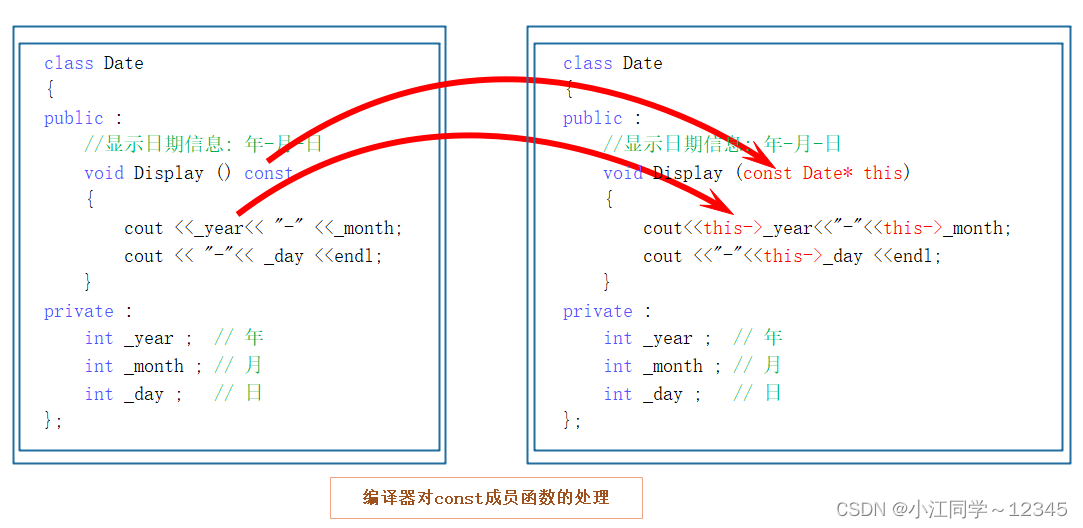
请思考下面的几个问题:
1. const对象可以调用非const成员函数吗?不可以,权限的放大
2. 非const对象可以调用const成员函数吗?可以,权限的缩小
3. const成员函数内可以调用其它的非const成员函数吗?不可以,权限的放大
4. 非const成员函数内可以调用其它的const成员函数吗?可以,权限的缩小
总结:
成员函数,如果是一个只对成员变量进行读访问的函数,建议在后面加const--->const和非const对象都可以调用
成员函数,如果是一个只对成员变量进行读+写访问的函数,不能在后面加const--->否则不能修改变量
权限放大版允许,权限缩小允许;指针和引用赋值才存在权限放大
8. 取地址及const取地址操作符重载⛈️
这两个默认成员函数一般不用重新定义 ,编译器默认会生成。
class Date
{
public :
Date* operator&()
{
return this ;
}
const Date* operator&()const
{
return this ;
}
private :
int _year ; // 年
int _month ; // 月
int _day ; // 日
};后语☀️
到这里,中篇也结束了。下次我们分享下篇,请大家多多期待!
本次的分享到这里就结束了!!!
PS:小江目前只是个新手小白。欢迎大家在评论区讨论哦!有问题也可以讨论的!期待大家的互动!!!
拜托了帮帮我点赞👍+收藏⭐️+关注➕(这对我真的很重要!!!)



![[C++<span style='color:red;'>初</span><span style='color:red;'>阶</span>]<span style='color:red;'>类</span><span style='color:red;'>和</span><span style='color:red;'>对象</span>(<span style='color:red;'>三</span>)](https://img-blog.csdnimg.cn/direct/e28ac8b254e7404cb10f81e9c00cbc15.png)
























![SCI 1区论文:Segment anything in medical images(MedSAM)[文献阅读]](https://img-blog.csdnimg.cn/img_convert/6d849a59d4d8126efd8cf9a830a7fe46.png)




